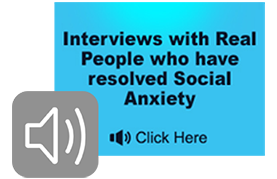This “tip of the month” is in response to the countless inquiries I receive from well-intentioned school personnel who contact me regarding their concerns about selectively mute students. The content here is based on my clinical experience since 1978 with individuals of all ages who suffered from social anxiety in general, as well as selective mutism in particular.
Selective mutism is a specific form of social and performance anxiety. It is a speaking phobia that can be looked at as a “compulsion to avoid speaking.” The problem manifests itself in varied degrees, but the primary characteristic is the child’s not speaking to specific people or in specific venues.
What is crucial to understand, is that the mutism is caused by the child’s obsessive mind. In essence, the child’s mind is ticking.
The mutism is the tip of the iceberg. It was not the tip that sank the Titanic; it was the ice beneath the surface. Below the surface of the selectively mute child is a complex integration of attitude, cognition, emotion, and physiology.
A very common statement from parents of selectively mute children is, “my child is normal at home”. Indeed, that is often the case. The reality, however, is that loving and well-intentioned parents have taken on the role of “enabling” the anxiety.
“Enabling” is any behavior on the part of caregivers that inhibits the growth or potential of the child. Parents often mistake “nurturing” for “rescuing”, in the form of talking for the child, over-thinking and over-problem-solving, and generally inhibiting the development of the child’s self-initiative. Countless times parents have communicated to me that they are just trying to “accommodate”. The problem is that over-accommodation is “enabling”, which can create dependent and avoidant personality disorders
The problem of selective mutism is insidious. Here is an example: Last year one of the television networks ran a story on selective mutism. I became aware because of a number of inquiries from people doing research who found my website and selective mutism seminar. As I watched the show, I saw the process of “enabling” taking place in the classroom concurrent to the therapist’s voice-over that “three years later the child was doing a little better”. Why “three years” and why only “a little better”? It was quite disturbing.
Interviews with several families who have successfully resolved the challenge of selective mutism can be found on the Social Anxiety Resolved library of interviews. A crucial part of the success formula for these families was learning the methodology of non-enabling.
Do not underestimate the word “methodology”. It’s not a hit-or-miss approach. It’s not a simple stimulus-response issue!
Techniques like an overt reward system – saying things like, “it would make me happy if you would talk to me, or whisper in my ear” – work paradoxically. They make the problem worse. The worst story was the school psychologist who told the selectively mute child, “you can’t leave my office until you talk.” This behavior created a bit of a breakdown. Personality conflicts and wars of will between teachers and selectively mute students are common. Also common – especially in pre-k and kindergarten – are scenarios where teachers over-indulge selectively mute children with love and kindness. This approach does reach the point of diminishing returns.
Here is the bottom line from my experience: When the parents have on a scale of 1-to-10 reached a 7 with their restructured, empowering, non-enabling parenting, we attempt to integrate the strategy into the school. I consult, usually via tele-conference and written guidelines. Attempting to integrate this strategy before the parents learn and implement their therapeutic strategy creates more fragmentation and distress. The child has to be prepared or it will backfire! The school therapeutic strategy will create positive stress. Stress is defined as “adaptation to change”. It’s imperative for all parties to be adequately prepared.
Sorry, there is no easy answer. There are many attempts for easy answers; they usually turn into accommodating or enabling.
For those of you who think that the child is “just shy” and will “grow out of the problem” listen to Mike, an adult with selective mutism.
There is an extensive library of interviews with individuals who have successfully resolved social anxiety.
Social Anxiety is a “disease of resistance.” The sad fact is that about one out of a hundred families where selective mutism exists will take any kind of productive action. One-to-one therapy is usually a waste, as is usually speech therapy. It’s not a speech disorder. It’s an anxiety disorder which is sustained by the complex avoidance-dependence syndrome.
You can help your students by making their parents aware. Please understand, many well-intentioned parents are in denial. Many experience their own anxiety. Your intervention now could save a family from a lifetime of distress and despair. Information/education is power.




